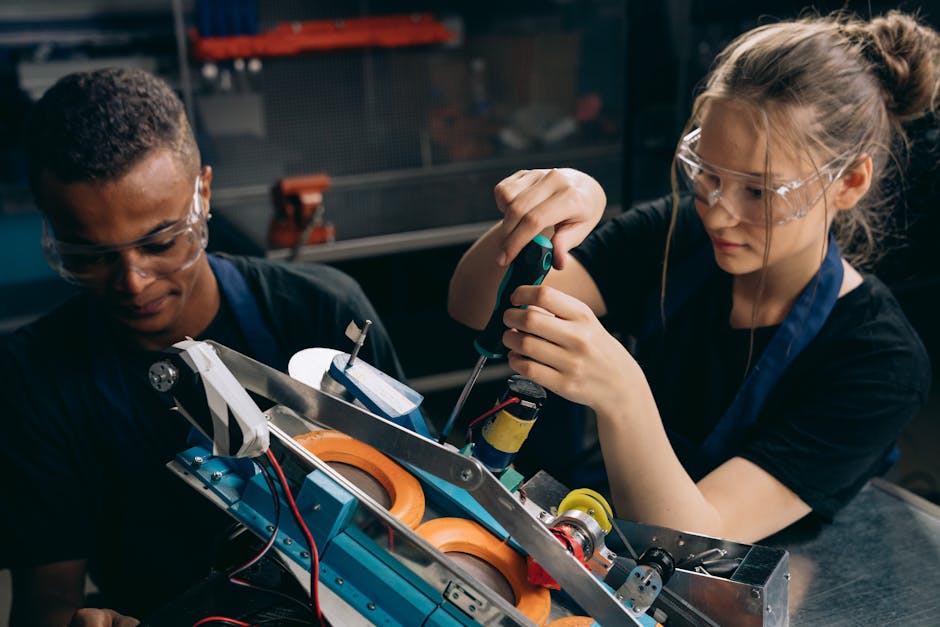Building a Sustainable Manufacturing Future
Have you ever thought about where your everyday products come from? The truth is, the manufacturing process plays a huge role in our environment. In recent years, sustainable manufacturing has become essential. But what does that really mean? Lets dive in.
What is Sustainable Manufacturing?

Sustainable manufacturing focuses on creating products in a way that is good for the planet and people. It aims to reduce waste, save energy, and lower pollution. Imagine making a toy that is both fun and kind to the Earth. that’s what sustainable manufacturing is all about!
Why Does Sustainable Manufacturing Matter?

Here are some key reasons why this approach is important:
- Environmental Impact: Conventional manufacturing often harms the environment. Sustainable practices help protect nature.
- Resource Conservation: Using materials wisely ensures we won’t run out of important resources.
- Consumer Demand: People care about the environment. They prefer products that are made sustainably.
In fact, a survey showed that 66% of consumers are willing to pay more for sustainable brands. This demand drives companies to change their practices.
How Can Manufacturers Become More Sustainable?

Changing traditional manufacturing methods can seem daunting. But there are many ways to start. Here are a few strategies:
1. Reduce Waste
Every piece of material counts. Manufacturers can implement practices like:
- Recycling scrap materials into new products.
- Using computer software to plan production more efficiently.
- Adopting a “zero-waste” philosophy, aiming to send nothing to landfills.
For example, a furniture company might take leftover wood scraps and turn them into smaller items, like coasters or picture frames.
2. Use Renewable Energy
Switching to renewable energy sources reduces carbon footprints. Here are some options:
- Solar Power: Installing solar panels can power factories.
- Wind Energy: Harnessing wind can provide clean electricity.
Using these energy sources not only protects the environment but can also save money in the long run.
3. Design for Longevity
Creating products that last longer reduces the need for replacements. Think about these tips:
- Use durable materials that can withstand wear and tear.
- Design products that are easy to repair or upgrade.
For instance, if a smartphone is designed to be easily repaired, it can stay in use longer, reducing electronic waste.
What Role Do Consumers Play in Sustainable Manufacturing?

As consumers, we have power! Heres how we can contribute:
- Make Informed Choices: Look for labels that indicate sustainability.
- Support Local Businesses: Local products often have a smaller carbon footprint.
- Advocate for Change: Encourage companies to adopt sustainable practices.
Every purchase we make sends a message. When we choose sustainable products, we encourage manufacturers to keep going!
What are the Challenges of Sustainable Manufacturing?
Transitioning to sustainable practices isn’t always easy. Here are some common challenges:
- Cost: Upfront investments may seem high.
- Knowledge Gap: Not all manufacturers know how to implement sustainable practices.
- Supply Chain Issues: Finding sustainable materials can be difficult.
However, many companies find that the benefits outweigh these challenges. With determination, they can overcome obstacles.
What are Some Successful Examples of Sustainable Manufacturing?
Several companies have successfully implemented sustainable practices. Their stories inspire others. Here are a few:
1. Patagonia
This outdoor clothing brand is famous for it’s commitment to sustainability. They use recycled materials and promote fair labor practices. Patagonia even encourages customers to repair their gear instead of buying new items.
2. Tesla
Tesla is not just about electric cars; it focuses on sustainable energy. The company uses renewable energy in it’s factories. it’s paving the way for a greener automotive industry.
How Can We Shape the Future of Manufacturing?
Looking ahead, we all have a role in shaping a sustainable future. Here are actionable steps we can take:
- Educate yourself and others about sustainable practices.
- Participate in local initiatives that promote sustainability.
- Support policies that encourage renewable energy and waste reduction.
By working together, we can create an environment where sustainable manufacturing thrives. A cleaner, healthier planet is within our reach!
Conclusion: A Call to Action
The journey towards sustainable manufacturing won’t happen overnight. But each step counts. Whether you’re a manufacturer or a consumer, your choices matter. Lets advocate for products that protect our planet and future generations.
For more information on sustainability practices, check out the EPAs Sustainable Manufacturing page.
Are you ready to make a difference? Together, we can build a better, greener future!



